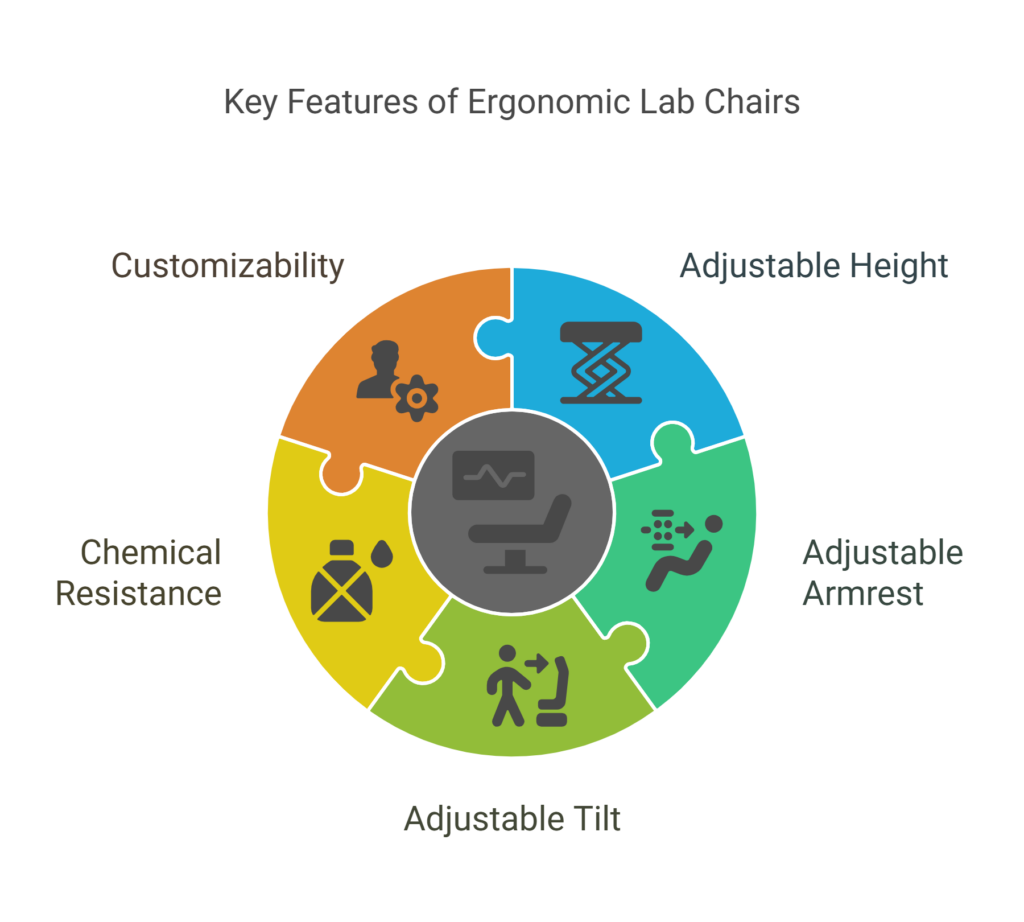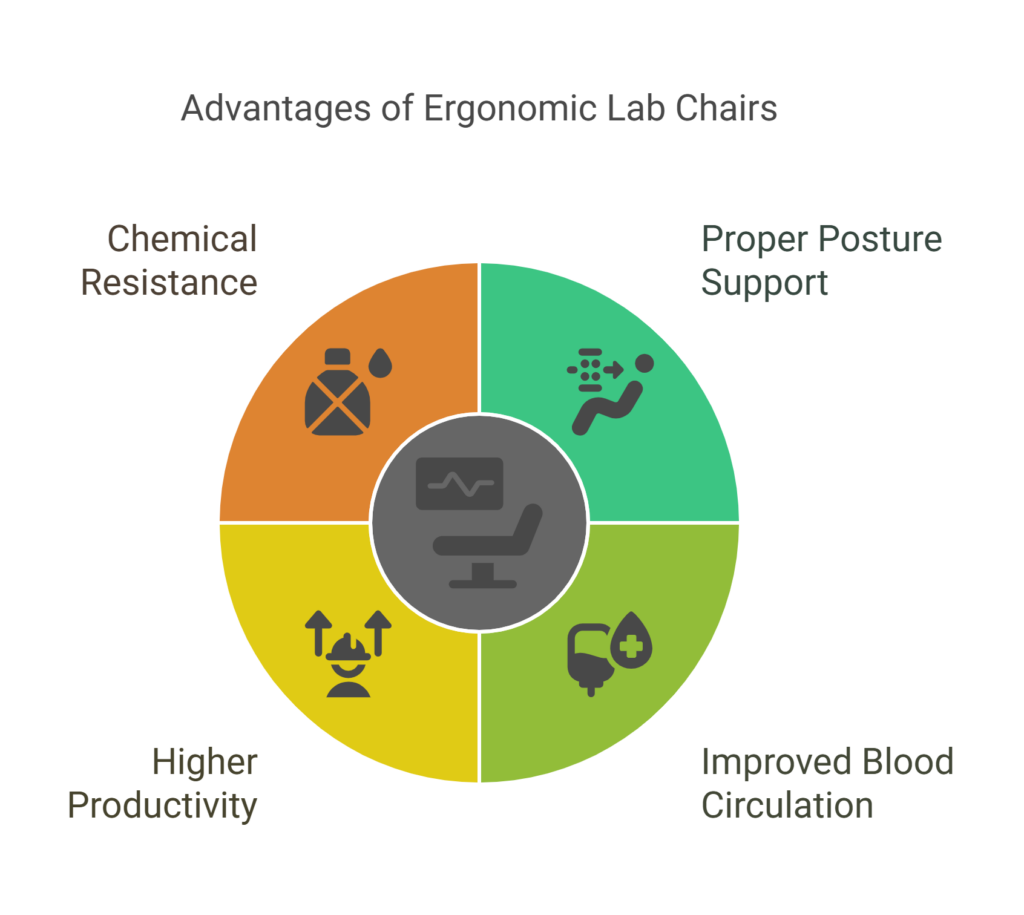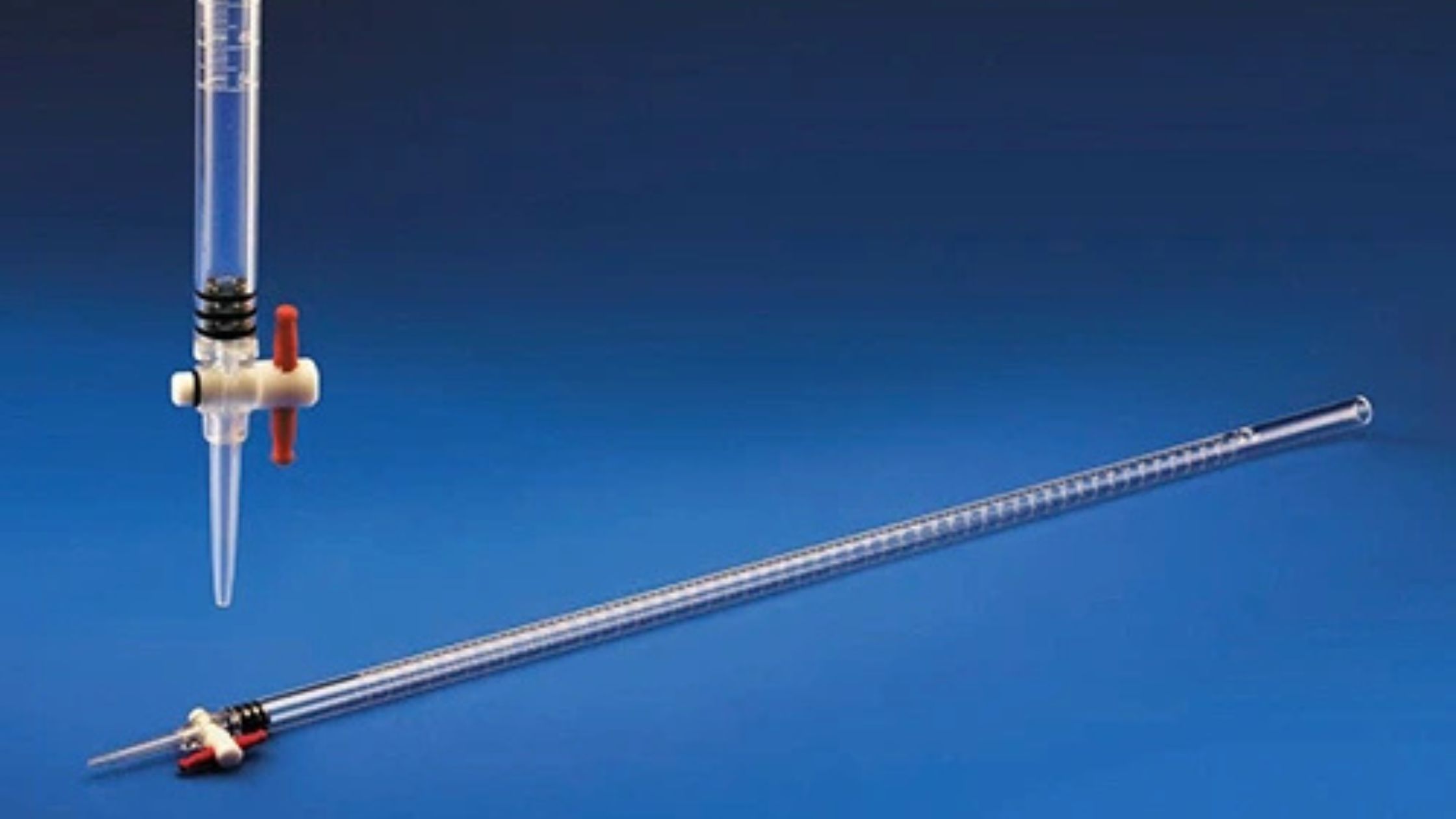Table of Contents
- What are ergonomic lab chairs?
- What are the features of ergonomic lab chairs?
- What are the benefits of ergonomic lab chairs?
If you work in a lab, you’ve probably felt the nagging strain in your back after sitting at the workbench for hours. While taking occasional breaks helps, lab work often keeps you in one position until the procedure is complete. Prolonged sitting and awkward postures during experiments can lead to long-term back pain, musculoskeletal issues, and posture defects. Although the challenges of lab work won’t go away, ergonomic lab chairs are a real solution. It’s not just for plush offices—labs can benefit from ergonomic chairs too. Let’s learn how.
What are ergonomic lab chairs?
Ergonomic lab chairs solve a real problem for researchers and students suffering from stiff backs, joint pain, and headaches caused by bad posture. To address this, they feature a select few elements that average lab chairs do not have.
What are the features of ergonomic lab chairs?

Adjustable height
Adjustable height allows users to align the chair with the workstation height, reducing bending of the spine and supporting a straight, correct posture. This is achieved through a gas lift piston at the bottom of the chair. Normally, lab stools are not fitted with this feature, making ergonomic lab chairs more adjustable. They also support the entire back, reducing awkward pressure points and promoting better back health.
Adjustable armrests
Allows users to customize the arm support according to their needs, depending on their body dimensions. This helps them control the height of the armrests for optimal comfort.
Tilt change
Larger chairs come with headrests, making them suitable for dry labs where computers are used. Changing the tilt allows users to look at multiple screens or switch between the workbench and the screen at different heights, without straining their neck.

Chemical & anti-static resistance
Ergonomic lab furniture is resistant to disinfectants and frequent cleaning. It is suitable for environments requiring high hygiene standards, such as laboratories, clean rooms, and hospitals.
Customizability
Multiple people use the same chairs in the laboratory. No one size fits all. Thus, these chairs offer similar comfort to all workers, ensuring each researcher can adjust the chair according to the dimensions of their body.
“An ergonomic lab chair adjusts to the user—never the other way around.“
What are the benefits of ergonomic lab chairs?

Spine Alignment & Posture Support

- Helps maintain proper spine alignment and supports the natural lumbar curve.
- Height adjustment allows feet to remain flat on the ground with knees at a 90° angle.
- Encourages correct posture, reducing strain on the back and neck.
- Helps position hips as far back into the chair as possible for better support.
- Allows reclining between 100-110° for added comfort.
Improved Blood Circulation & Reduced Health Risks

- Promotes healthy blood circulation from head to toe, reducing swelling and numbness in the lower back and feet.
- Minimizes pressure on the lower body, preventing hemorrhoids and nerve compression (e.g., sciatica).
- Reduces the risk of musculoskeletal disorders like osteoarthritis.
- Helps prevent injuries such as Repetitive Strain Injuries (RSI) and Occupational Overuse Syndrome (OOS).
Increased Comfort & Productivity
- Comfort promotes efficiency, focus, and overall job satisfaction.
- Improved blood supply as a result of good posture ensures proper nutrient supply throughout the body, resulting in greater energy and reduced fatigue.
- Supports dynamic movement, adapting to the user’s posture changes.
- Encourages a positive mindset, leading to better performance.
Chemical & Anti-Static Resistance
- Resistant to disinfectants and frequent cleaning.
- Suitable for environments requiring high hygiene standards, such as laboratories, clean rooms and hospitals.
Create an ergonomic environment for your laboratory. Get ergonomic lab chairs from Labkafe.












Leave a Reply